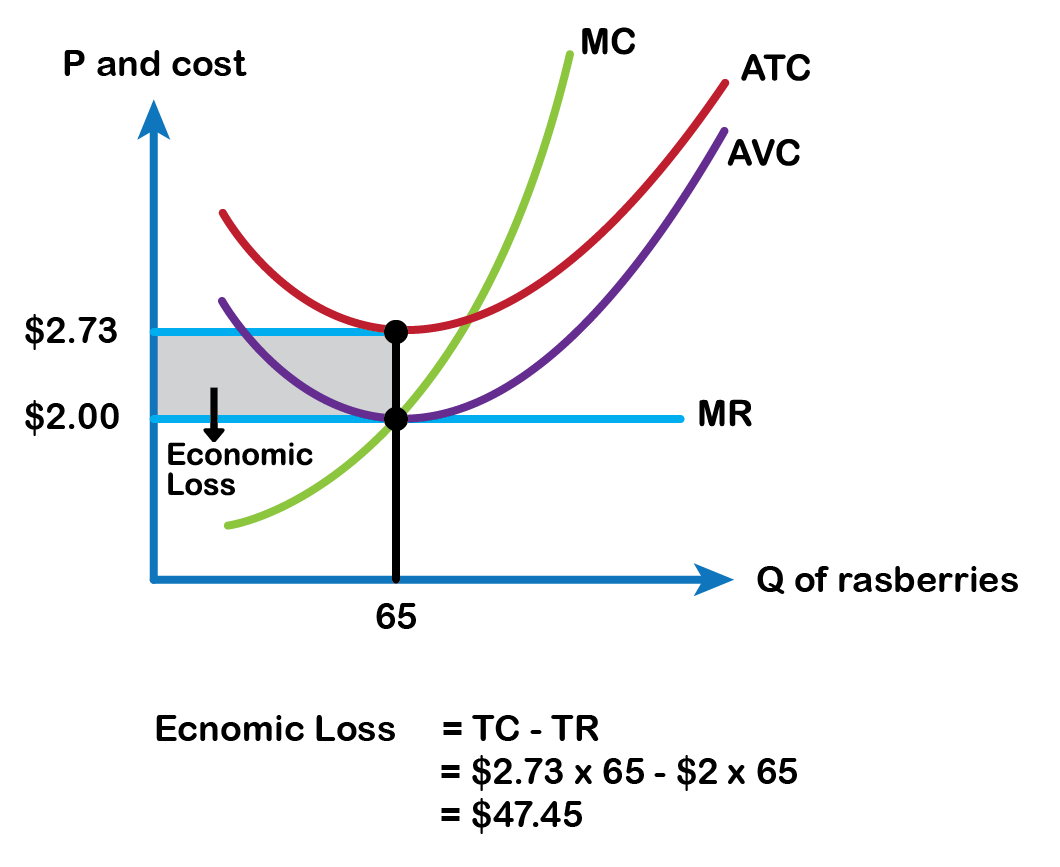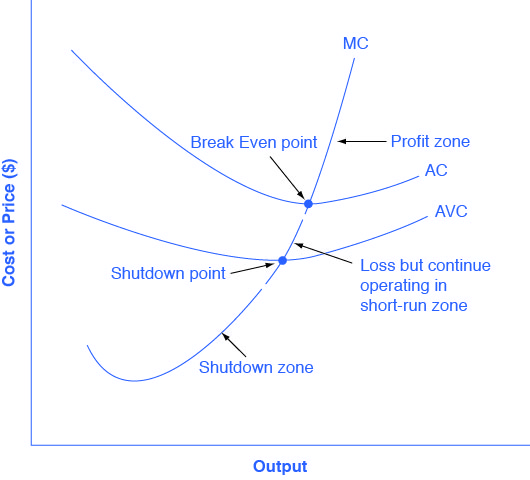8.5 Economic Loss and Shut Down in the Short Run
The possibility that a firm may earn losses raises a question: Why can the firm not avoid losses by shutting down and not producing at all? The answer is that shutting down can reduce variable costs to zero, but in the short run, the firm has already paid for fixed costs. As a result, if the firm produces a quantity of zero, it would still make losses because it would still need to pay for its fixed costs. Therefore when a firm is experiencing losses, it must face a question: should it continue producing or should it shut down?
In either case, the firm pays for its fixed cost which is the economic loss incurred. However, to understand whether the firm can continue producing, we need to identify the average variable cost of production.

The Fig 8.10 above shows the loss minimizing output of 65. The marginal revenue or price received from selling each pack is $2 and the average variable cost of producing 65 packs is also $2. The price just covers the average variable cost of production, which implies the farmer will still be able to manage and continue production because labour cost and raw material cost for producing each pack are paid for by the price received. However, if the firm decides to shut down temporarily and stop production, it still has to incur an economic loss of $47.45 (fixed cost paid out of its own pocket).
Therefore, P = AVC is called the shutdown point, at which level the firm is indifferent between producing the loss minimizing output or shutting down. Shut down is a temporary phenomenon where the firm stays in the business but could stop production for a while until market conditions improve. If P > AVC but P < ATC, then the firm continues to produce in the short-run, making economic losses.
However, If P < AVC, then the firm stops producing as the price is not sufficient enough to cover the variable cost and the firm incurs its fixed costs.
Marginal Cost and the Firm’s Supply Curve
For a perfectly competitive firm, the marginal cost curve is identical to the firm’s supply curve starting from the minimum point on the average variable cost curve. To understand why this perhaps surprising insight holds true, first think about what the supply curve means. A firm checks the market price and then looks at its supply curve to decide what quantity to produce. Now, think about what it means to say that a firm will maximize its profits by producing at the quantity where P = MC. This rule means that the firm checks the market price, and then looks at its marginal cost to determine the quantity to produce—and makes sure that the price is at least equal to the minimum average variable cost. In other words, the marginal cost curve above the minimum point on the average variable cost curve becomes the firm’s supply curve. The rising portion of the MC curve from the shutdown point becomes the firm’s supply curve in the short run, as shown in fig 8.11 below.

Attribution
“8.2 How Perfectly Competitive Firms Make Output Decisions” in Principles of Economics 2e by OpenStax is licensed under Creative Commons Attribution 4.0 International License.

